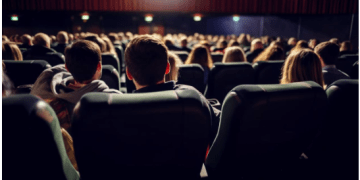The Team GB icon is faced with an impossible dilemma, four years on from retiring from swimming
Team GB swimming legend Ellie Simmonds has opened up on the heartbreaking decision she faces on whether or not she should have children, admitting she “was just not ready” for the emotional impact of the dilemma.
The five-time Paralympic gold medallist – who retired from the sport in 2021 – celebrated her 30th birthday in November and, having split from her partner Matt Dean, is now looking ahead to starting the next stage of her life, but is still unsure whether she wants that to include becoming a mother or not.
Simmonds – who has achondroplasia, the most common cause of dwarfism – looks to address that dilemma in a new ITV documentary, Ellie Simmonds: Should I Have Children?, which explores the issues facing parents who are told that their children will be born with disabilities.
The film sees her look at the variety of options that are available to her, from using a sperm donor to freezing her eggs, as well as adoption. Simmonds herself was given up for adoption by her birth mother when she was born and adopted at two weeks old.
However, the former swimmer – who also competed on Strictly Come Dancing in 2022 – has something else to consider, with her achondroplasia relevant to any future decision she will make about starting a family.
“I already know that gene changes led to my dwarfism and if I started a family, there would be a chance that I’d pass it on,” she told The Times.
“I’m superlucky. I’ve got the least impaired version of achondroplasia. But there could be complications with the spine, bowing of the legs, which can lead to reduced walking.”
Having met with a clinical geneticist specialising in achondroplasia, Simmonds has also received guidance on pre-implantation genetic testing (PGT) – which is used to identify genetic defects in embryos before they are transferred to the uterus – leaving her with a lot to consider.
If she were to have a child with an average-sized partner, she explains, the baby would have a 50 per cent chance of having achondroplasia.
However, if her partner also had achondroplasia, the chance of an average-sized child drops to 25 per cent, while there is a 50 per cent chance of ‘single dose’ dwarfism and a 25 per cent chance of ‘double dose’ dwarfism, from which babies do not survive.
Addiitonally, those who undergo PGT also have to commit to having a ‘normal’ embryo placed back in the uterus.
“If we did that, no dwarfism baby would be born to a dwarfism couple,” Simmonds explains in the documentary.
“In fact, not just a dwarfism baby, but any baby with a disability,” she later added, as she now faces a heartbreaking dilemma over whether to undergo PGT or not. While doing so would see her avoid a potentially devastating, fatal outcome, she would also filter out a disabled child in the process.
“I’m involved in dwarf sports and the dwarfism community. I’m so proud to be part of that and to have dwarfism,” she continued.
“It would depend if [the father] was an individual with dwarfism or a non-disabled person. I’d never heard of PGT before now. But now I feel educated. I know it’s there for me [if I want it] and to prevent the trauma of a double dose.
“I came away from it thinking, ‘What can I do to make sure that people with a disability are being brought into this world to have a happy, content and fulfilled life?’ We might need a bit more support and I might need a few adaptations around my house, or maybe some hospital appointments, but we’re all different and it should be celebrated.
“I’m trying to help families and disabled people to feel more content, to feel happy with who they are,” she added, before admitting that adoption “is definitely something I’d be up for thinking about in the future”.
On taking part in the documentary, Simmonds admitted it had been a journey full of emotion, as she explained: “Making all these decisions is like digging deep down into your core. I was just not ready for it.
She added: “I thought I knew everything about my body, but there was so much I didn’t know. I now understand that as you get older your fertility drops. I know a lot of people who are starting to freeze their eggs, so they have the opportunity to have a child in the future.
“That’s definitely something that I may do. And a lot of women are now deciding to use a sperm donor and have a child on their own. That’s powerful too.
“But it’s also powerful to understand that you don’t have to get married and have children and live happily ever after like in the movies. You’ve got other options for your life. My indecision is more about being a woman than about my disability.”



